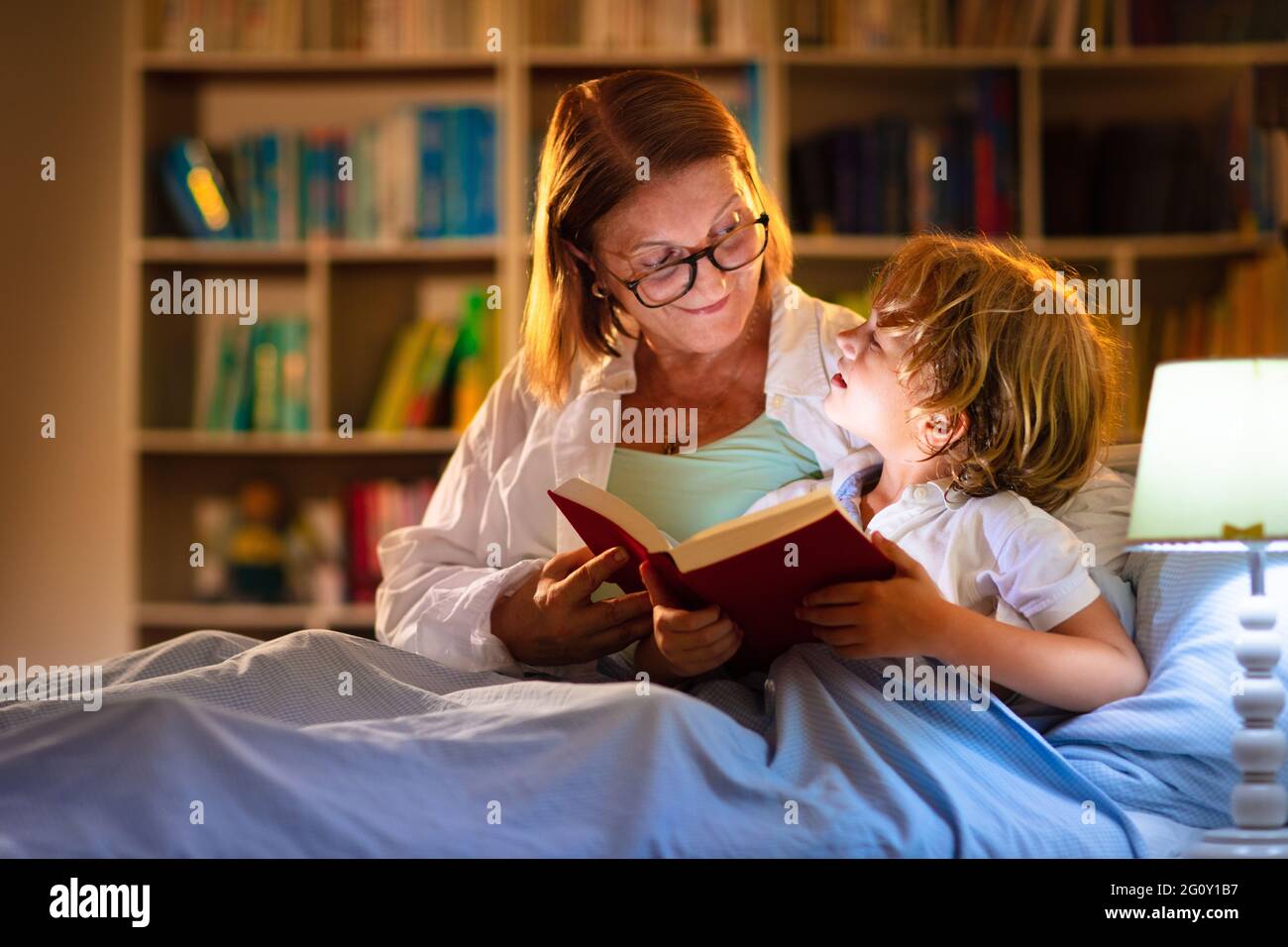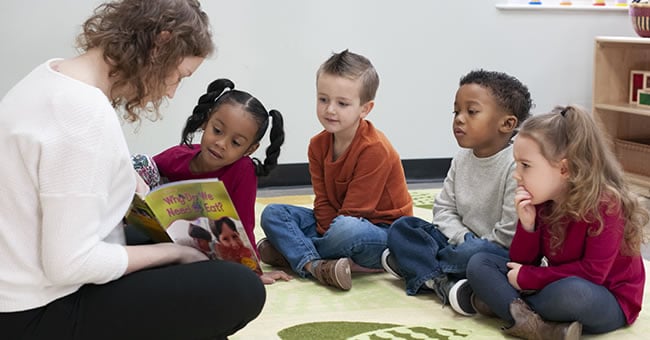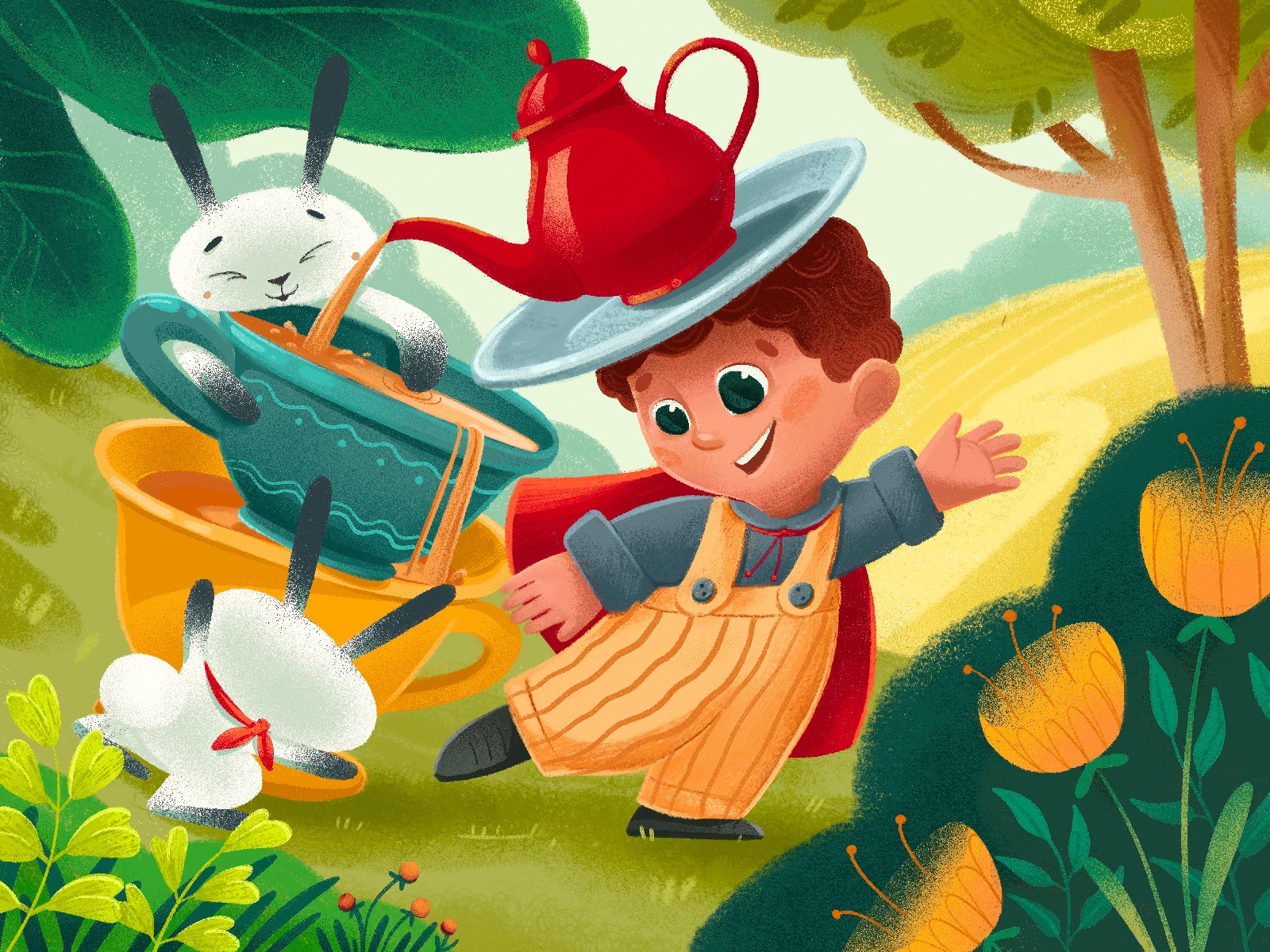Magical Bedtime Stories & Children's Tales
Magical Bedtime Stories & Children's Tales
Discover the enchanting world of storytelling, fairy tales, and bedtime stories that nurture imagination, teach valuable lessons, and create lasting memories for children of all ages.

In the magical realm of childhood, few experiences are as cherished and transformative as the ritual of storytelling. Children's stories, bedtime tales, and fairy tales have been the cornerstone of childhood development for countless generations, weaving together entertainment, education, and emotional growth into captivating narratives that spark imagination and nurture young minds.
From the earliest nursery rhymes whispered to newborns to the elaborate adventure stories that captivate school-age children, storytelling serves as a bridge between the real world and the boundless possibilities of imagination. These magical bedtime stories do more than simply entertain; they become powerful tools for learning, character development, and emotional intelligence.
The tradition of sharing stories with children encompasses a rich tapestry of genres and formats. Picture books with vibrant illustrations bring characters to life, while classic fairy tales teach timeless lessons about courage, kindness, and perseverance. Educational stories seamlessly blend learning with fun, making complex concepts accessible to young minds. Animal stories help children connect with nature and understand empathy, while moral stories provide frameworks for ethical thinking and decision-making.
The Magic of Bedtime Stories
Cognitive Development Through Stories
Bedtime stories serve as powerful catalysts for cognitive development in children. When parents and caregivers share these magical bedtime stories, they're not just providing entertainment; they're actively contributing to language development, vocabulary expansion, and critical thinking skills. The rhythmic nature of storytelling helps children understand sentence structure, while exposure to diverse vocabulary through different stories broadens their linguistic capabilities.
Research has consistently shown that children who are regularly read to develop stronger reading skills, better comprehension abilities, and enhanced creativity. The interactive nature of storytime, where children can ask questions, predict outcomes, and discuss characters, further enhances these cognitive benefits. Short stories for kids are particularly effective because they provide complete narrative arcs that young minds can easily grasp and remember.

Emotional Bonding and Security
The bedtime story ritual creates a sacred space of connection between children and their caregivers. This daily practice of sharing heartwarming tales becomes a cornerstone of emotional security, providing children with a sense of stability and unconditional love. The gentle rhythm of a parent's voice reading fairy tales or adventure stories creates a calming atmosphere that helps children transition from the excitement of the day to the peacefulness of sleep.
These intimate storytelling moments allow children to process their emotions through the experiences of story characters. When a child hears about a brave princess overcoming challenges or a kind animal helping others, they internalize these positive behaviors and emotional responses. Interactive stories that encourage participation help children feel valued and heard, strengthening the parent-child bond through shared imagination and creativity.
The consistency of bedtime stories also provides children with a reliable routine that signals safety and love. Whether it's classic tales passed down through generations or newly discovered picture books, each story becomes a thread in the tapestry of childhood memories, creating lasting emotional connections that children carry into adulthood.
Exploring Different Types of Children's Stories
Classic Fairy Tales
Timeless stories like Cinderella, Snow White, and Little Red Riding Hood that have captivated children for centuries. These magical stories often feature princesses, princes, and mythical creatures, teaching valuable lessons about good versus evil, perseverance, and the triumph of kindness over cruelty.
Animal Stories
Delightful tales featuring talking animals, forest creatures, and beloved pets. These imaginative stories help children develop empathy for animals while teaching important lessons about friendship, cooperation, and respect for nature through engaging animal characters.
Educational Stories
Stories designed to teach specific concepts like numbers, letters, colors, or science facts. These learning through stories approaches make education enjoyable and memorable, helping children absorb new information through engaging narratives and colorful illustrations.

Fantasy and Magical Stories
Fantasy stories transport children to enchanted realms filled with wizards, dragons, magical forests, and extraordinary adventures. These imaginative stories stimulate creativity and help children explore concepts of possibility and wonder. From tales of flying carpets to stories about magical gardens, fantasy literature expands children's understanding of what's possible while encouraging creative thinking.
Modern fantasy stories often blend traditional magical elements with contemporary themes, making them relevant to today's children while maintaining the timeless appeal of magical narratives. These stories help children develop problem-solving skills as characters navigate magical challenges and overcome obstacles through creativity and determination.
Adventure Stories for Young Explorers
Adventure stories ignite children's sense of exploration and discovery. These exciting tales might feature young heroes embarking on quests, exploring new lands, or solving mysteries. Adventure stories for children often combine excitement with valuable lessons about courage, friendship, and perseverance in the face of challenges.
Whether it's a story about pirates searching for treasure, children exploring a mysterious forest, or young adventurers traveling to distant lands, these narratives inspire children to be curious about the world around them. They encourage physical activity, exploration, and the development of resilience and problem-solving skills.

Moral Stories and Life Lessons

Building Character Through Storytelling
Moral stories serve as gentle guides in helping children understand right from wrong, develop empathy, and build strong character foundations. These powerful narratives present ethical dilemmas and positive role models in ways that children can easily understand and relate to. Through the experiences of story characters, children learn about honesty, kindness, responsibility, and the importance of treating others with respect.
Classic fables like "The Tortoise and the Hare" teach persistence and humility, while stories about sharing and cooperation help children understand the value of community and friendship. These moral stories often feature relatable situations that children encounter in their daily lives, making the lessons more applicable and memorable. When children see characters facing similar challenges to their own, they can better internalize the positive behaviors and decision-making processes demonstrated in the stories.
Essential Moral Lessons in Children's Stories
- Honesty and Truth: Stories that show the importance of telling the truth and the consequences of lying
- Kindness and Empathy: Tales that demonstrate compassion for others and understanding different perspectives
- Perseverance and Hard Work: Stories about overcoming challenges through determination and effort
- Friendship and Loyalty: Narratives about building and maintaining meaningful relationships
- Responsibility and Consequences: Stories that show how actions have results and the importance of accountability
- Courage and Bravery: Tales about facing fears and standing up for what's right
The beauty of moral stories lies in their ability to present complex ethical concepts in simple, engaging ways. Rather than lecturing children about proper behavior, these stories allow them to witness the natural consequences of different choices and behaviors. This approach helps children develop their own moral reasoning skills and internalize positive values that will guide them throughout their lives.

Age-Appropriate Storytelling Guidelines
Infants and Toddlers (0-2 years): First Steps into Storytelling
For the youngest listeners, toddler stories focus on sensory experiences, simple repetitive phrases, and basic concepts. Board books with thick pages and bright, simple illustrations are perfect for this age group. Nursery rhymes with their rhythmic patterns help develop language skills and phonemic awareness, laying the foundation for future reading success.
Interactive stories that involve touching textures, making sounds, or simple movements keep very young children engaged. Stories about daily routines like eating, sleeping, and playing help toddlers understand their world and develop vocabulary for familiar experiences. The key is keeping stories short, simple, and highly visual with plenty of opportunity for interaction.
Best Story Types for Toddlers:
- • Simple nursery rhymes and finger plays
- • Board books with real photographs
- • Stories about animals and their sounds
- • Interactive books with flaps and textures
- • Simple bedtime routines stories
Tips for Toddler Storytime
- Use different voices for characters to maintain interest
- Keep stories under 5 minutes for attention spans
- Repeat favorite stories multiple times
- Encourage pointing and naming objects in pictures
- Make reading a daily routine for consistency
Preschoolers (3-5 years): Building Language and Imagination

Preschool stories can be longer and more complex, introducing simple plots, character development, and cause-and-effect relationships. This is the perfect age for classic fairy tales, simple adventure stories, and educational stories that teach colors, numbers, letters, and social skills. Picture books with detailed illustrations allow children to practice observation skills and storytelling through visual cues.
Preschoolers love stories they can participate in through actions, sound effects, or predicting what happens next. They're beginning to understand story structure and can follow more complex narratives with multiple characters. This is also an excellent time to introduce moral stories that teach values like sharing, kindness, and honesty through relatable situations and characters.
Popular Preschool Story Themes:
- • Making friends
- • Sharing toys
- • Family relationships
- • School experiences
- • Alphabet adventures
- • Counting stories
- • Color exploration
- • Shape recognition
- • Fantasy adventures
- • Talking animals
- • Magical worlds
- • Superhero stories
Early Elementary (6-8 years): Independent Reading Begins
Early reader books become increasingly important as children begin to read independently. Stories for this age group feature simple sentences, familiar vocabulary, and clear illustrations that support the text. Chapter books with short chapters allow children to feel accomplished while building reading stamina. Fun stories for kids at this level often include humor, adventure, and relatable characters facing age-appropriate challenges.
Children this age enjoy series books with recurring characters, as they provide familiarity and comfort while building reading confidence. Educational stories that teach about science, history, or different cultures expand their knowledge while maintaining engagement through storytelling. Interactive stories that include puzzles, questions, or activities extend the reading experience beyond the book itself.
Reading Development Goals
- • Building reading fluency and confidence
- • Expanding vocabulary through context
- • Understanding story elements and structure
- • Developing comprehension strategies
- • Fostering a love of independent reading
Story Selection Tips
- • Choose books slightly below reading level for confidence
- • Include both fiction and non-fiction options
- • Provide access to series books and standalone stories
- • Balance challenging and easy reads
- • Include diverse characters and perspectives
The Profound Benefits of Regular Storytelling

Research-Backed Benefits of Daily Story Reading
Extensive research in child development and education has consistently demonstrated that regular exposure to stories provides children with numerous advantages that extend far beyond simple entertainment. Learning through stories has been shown to accelerate cognitive development, enhance emotional intelligence, and provide children with essential life skills that serve them throughout their academic and personal journeys.
Cognitive and Academic Benefits
- Enhanced Vocabulary Development: Children exposed to diverse stories encounter 50% more vocabulary words than those who aren't regularly read to
- Improved Reading Comprehension: Regular story exposure develops critical thinking and analytical skills essential for academic success
- Better Academic Performance: Children who hear stories regularly show improved performance across all subject areas
- Enhanced Memory Skills: Story structure helps children develop memory strategies and recall abilities
Emotional and Social Benefits
- Increased Empathy: Stories help children understand different perspectives and develop emotional intelligence
- Stress Reduction: Bedtime stories create calming routines that reduce anxiety and promote better sleep
- Stronger Family Bonds: Shared storytelling creates lasting emotional connections and family traditions
- Cultural Understanding: Diverse stories introduce children to different cultures and ways of life
Long-Term Life Benefits
The benefits of regular storytelling extend well into adulthood. Children who grew up with rich story experiences often become more creative adults, better communicators, and more empathetic individuals. They tend to have stronger problem-solving skills, greater cultural awareness, and a lifelong love of learning that serves them in both personal and professional contexts.
Studies have shown that adults who were regularly read to as children are more likely to read to their own children, creating a positive cycle that benefits multiple generations. They also tend to perform better in careers that require creativity, communication, and critical thinking skills, demonstrating the lasting impact of early story exposure.
Picture Books and Visual Storytelling
The Art of Illustration in Children's Books
Illustrated books play a crucial role in children's literary development, combining visual and textual elements to create rich, immersive storytelling experiences. The artwork in picture books isn't merely decorative; it serves as a vital component of the narrative, often conveying emotions, setting, and character development that complement and enhance the written story.
High-quality illustrations help children develop visual literacy skills, teaching them to interpret images, understand visual symbolism, and make connections between pictures and text. This visual-textual relationship is particularly important for early readers, as illustrations provide context clues that support reading comprehension and vocabulary development.
Modern picture books showcase diverse artistic styles, from watercolor paintings to digital art, collages to photography. This variety exposes children to different forms of artistic expression while demonstrating that stories can be told through multiple visual mediums. The best illustrated books create seamless integration between text and image, where each element strengthens and supports the other.

Professional illustrations bring stories to life and enhance children's reading experience
Visual Elements That Enhance Storytelling
Visual Storytelling Elements
- • Character expressions and body language
- • Setting details that establish mood
- • Color choices that convey emotions
- • Visual metaphors and symbolism
- • Page layout and composition
Educational Benefits
- • Visual literacy development
- • Art appreciation and awareness
- • Cultural representation and diversity
- • Critical thinking through visual analysis
- • Creativity and imagination stimulation
Interactive Elements
- • Discussion prompts from illustrations
- • Hidden details to discover
- • Sequence understanding through images
- • Prediction based on visual cues
- • Emotional recognition through facial expressions
The most effective picture books create a dynamic relationship between text and illustration, where each page turn reveals new visual information that advances the story. Children learn to "read" pictures just as they learn to read words, developing skills in observation, interpretation, and critical thinking that serve them throughout their educational journey.
Interactive stories that encourage children to point out details, predict what happens next based on visual clues, or discuss the emotions shown in character expressions transform passive reading into active engagement. This interaction deepens comprehension, builds vocabulary, and creates more memorable reading experiences that children want to repeat.
Storytelling in the Digital Age

Balancing Traditional and Digital Storytelling
The digital revolution has transformed how children access and experience stories, creating new opportunities for interactive storytelling while raising important questions about screen time and the value of traditional book reading. Modern families navigate a landscape where audiobooks, e-books, story apps, and traditional printed books all play potential roles in children's literary development.
Digital Storytelling Advantages
- Accessibility: Digital books can be easily accessed anywhere, making story time possible during travel or in situations where physical books aren't practical
- Interactive Features: Many digital stories include animations, sound effects, and interactive elements that can enhance engagement
- Multilingual Options: Digital platforms often offer stories in multiple languages, supporting bilingual development
- Adaptive Learning: Some apps adjust difficulty levels based on a child's reading progress and comprehension
Traditional Book Benefits
- Physical Interaction: Turning pages, touching different textures, and holding books provide important sensory experiences
- Focused Attention: Physical books eliminate digital distractions, promoting deeper engagement with the story
- Eye Health: Reading print books reduces screen time and associated eye strain concerns
- Collection Building: Physical books create personal libraries that children can revisit and treasure throughout their lives
Creating a Balanced Approach
The most effective approach to modern storytelling combines the best of both digital and traditional formats. Families can use digital stories for convenience and variety while maintaining the special intimacy and focus that comes with physical book reading. The key is intentional selection based on the specific benefits each format provides.
Best Uses for Digital Stories:
- • Long car trips or travel situations
- • Exploring new authors and genres
- • Language learning and pronunciation
- • Interactive learning experiences
- • Accessibility needs (vision, hearing, motor)
Best Uses for Physical Books:
- • Bedtime routines and calming activities
- • Favorite stories for repeated reading
- • Building personal library collections
- • Tactile and sensory exploration
- • Focused, distraction-free reading time
Cultural Diversity in Children's Literature
Expanding Horizons Through Diverse Stories
In our increasingly connected world, exposing children to diverse stories and perspectives has never been more important. Classic tales from around the world, contemporary stories featuring characters from different backgrounds, and narratives that celebrate various cultures and traditions help children develop cultural competency, empathy, and a broader understanding of the human experience.
International Folktales
Traditional stories from different cultures provide windows into diverse worldviews, values, and traditions. These tales often share universal themes while showcasing unique cultural perspectives and customs.
Contemporary Diverse Characters
Modern children's books increasingly feature protagonists from various ethnic, cultural, and socioeconomic backgrounds, allowing all children to see themselves reflected in literature.
Multilingual Stories
Bilingual books and stories that incorporate multiple languages help children appreciate linguistic diversity and support multilingual development in families.
Benefits of Culturally Diverse Stories
- Enhanced Empathy: Understanding different perspectives builds emotional intelligence and compassion
- Cultural Awareness: Exposure to diverse traditions and customs promotes global citizenship
- Identity Validation: Children from diverse backgrounds see their experiences reflected and valued
- Reduced Prejudice: Early exposure to diversity reduces bias and promotes acceptance
- Critical Thinking: Comparing different cultural approaches develops analytical skills
- Global Perspective: Understanding interconnectedness prepares children for our globalized world
When selecting diverse stories for children, it's important to choose books that authentically represent different cultures rather than relying on stereotypes or superficial portrayals. The best diverse children's literature is created by authors who have genuine connections to the cultures they're representing, ensuring accuracy, respect, and authentic voice in their storytelling.
Creating Your Own Family Stories
The Joy of Collaborative Storytelling
While published books provide wonderful stories, some of the most meaningful and memorable tales are those created within families themselves. Collaborative storytelling, where family members contribute to creating original narratives, builds creativity, strengthens family bonds, and creates unique stories that reflect your family's values, experiences, and imagination.
Story Creation Techniques
- Round-Robin Stories: Each family member adds a sentence or paragraph, creating unexpected plot twists and collaborative creativity
- Character Adventures: Create recurring family characters who go on different adventures in each story session
- Photo Stories: Use family photos as inspiration for creating narratives about real or imagined adventures
- Problem-Solving Tales: Create stories where characters face challenges similar to those your children encounter
Family Story Themes
- Family History: Turn real family stories and ancestral tales into engaging narratives that preserve family heritage
- Adventure Tales: Create stories about family trips, explorations, or imaginary journeys to fantastic places
- Problem Solving: Develop stories that help children work through real-life situations and challenges
- Special Occasions: Create stories around holidays, birthdays, and family celebrations
Tools and Resources for Family Storytelling
Physical Tools:
- • Story cubes or dice with pictures
- • Drawing materials for illustrations
- • Recording devices for audio stories
- • Props and costumes for acting
- • Journals for writing stories down
Digital Resources:
- • Story-building apps and games
- • Digital drawing and illustration tools
- • Video recording for story performances
- • Online story templates and prompts
- • Family storytelling communities
Inspiration Sources:
- • Family photographs and memories
- • Nature walks and observations
- • Dreams and imaginative play
- • Current events and experiences
- • "What if" questions and scenarios
The beauty of family-created stories lies not in their perfection but in their personal meaning and the collaborative joy of creation. These stories become treasured family memories, unique to your family's experiences and imagination. Recording or writing down these collaborative stories allows families to revisit and share them over time, creating a personalized library of family tales that can be passed down through generations.
Making Storytime Special and Memorable
Creating Magical Reading Experiences
Transform ordinary story reading into extraordinary experiences that children will remember and cherish. The way stories are presented can significantly impact their effectiveness and the lasting impression they make on young minds. Creating special storytime rituals and environments enhances engagement and makes reading a truly magical experience for the whole family.
Creating the Perfect Reading Environment
- Cozy Reading Nook: Designate a special area with comfortable pillows, soft blankets, and good lighting specifically for story time
- Minimize Distractions: Turn off electronic devices and create a quiet, focused atmosphere for reading
- Consistent Timing: Establish regular story times that children can anticipate and look forward to
- Special Ambiance: Use soft lighting, maybe even battery-operated candles or string lights for extra magic
Interactive Reading Techniques
- Character Voices: Develop distinct voices for different characters to bring the story to life
- Gesture and Movement: Use hand gestures, facial expressions, and body movements to enhance storytelling
- Pause and Predict: Stop at key moments to ask children what they think will happen next
- Discussion Questions: Engage children with questions about characters' feelings and motivations
Special Storytime Events and Traditions
Weekly Themes
- • Magical Monday fairy tales
- • Wild Wednesday animal stories
- • Friendship Friday tales
- • Adventure Saturday stories
- • Silly Sunday humor books
Special Occasions
- • Birthday story celebrations
- • Holiday-themed reading marathons
- • Season change story festivals
- • Author appreciation weeks
- • Family story creation nights
Reading Rewards
- • Story completion certificates
- • Reading milestone celebrations
- • Book collection growth charts
- • Story retelling performances
- • Literary character costume days
Remember that the goal is not perfection but connection and joy. Some of the most memorable storytime experiences come from spontaneous moments - a child's unexpected question, a silly voice that makes everyone laugh, or a discussion that springs from a story's theme. These organic moments often become the most treasured memories of shared reading experiences.
The effort invested in making storytime special pays dividends in children's love for reading and learning. When children associate reading with warmth, love, and positive experiences, they're more likely to become lifelong readers who will eventually share that same love of stories with their own children, creating a beautiful cycle of literacy and love that spans generations.
Begin Your Magical Storytelling Journey Today
The world of children's stories, bedtime tales, and magical narratives awaits you and your family. Every story shared, every character voiced, and every moment spent reading together contributes to a child's development, happiness, and lifelong love of learning. Start creating those precious storytelling memories today.
Discover Magical Bedtime Stories
Ready to transform bedtime into a magical adventure? Explore our collection of enchanting stories designed to spark imagination, teach valuable lessons, and create lasting memories with your children.
Explore Magical Bedtime StoriesPeaceful Bedtimes
Create calming nighttime routines with soothing stories
Educational Fun
Learn through engaging tales and moral stories
Family Bonding
Strengthen relationships through shared storytelling
Continue Your Storytelling Adventure
Stories for Toddlers
Discover age-appropriate stories perfect for your youngest listeners, featuring simple plots, repetitive phrases, and interactive elements.
- • Board book recommendations
- • Interactive nursery rhymes
- • Sensory storytelling techniques
- • Building early language skills
Classic Fairy Tale Guide
Explore timeless fairy tales and their modern adaptations, understanding their cultural significance and educational value.
- • Traditional vs. modern versions
- • Cultural origins and meanings
- • Discussion questions for families
- • Character analysis and themes
Illustrated Book Reviews
Reviews and recommendations of beautifully illustrated children's books that combine stunning artwork with engaging narratives.
- • Award-winning illustrations
- • Artist spotlight features
- • Visual storytelling techniques
- • Art appreciation for children
Multicultural Stories
Curated collections of diverse stories from around the world that celebrate different cultures, traditions, and perspectives.
- • International folktales
- • Contemporary diverse authors
- • Cultural celebration stories
- • Bilingual book recommendations
Educational Story Resources
Stories that make learning fun, covering topics from science and math to history and social skills through engaging narratives.
- • STEM concept stories
- • Historical fiction for kids
- • Social-emotional learning tales
- • Nature and environmental stories
Family Reading Activities
Creative ideas and activities to extend the storytelling experience beyond reading, including crafts, games, and discussions.
- • Story-based craft projects
- • Reading comprehension games
- • Character costume ideas
- • Story discussion guides

